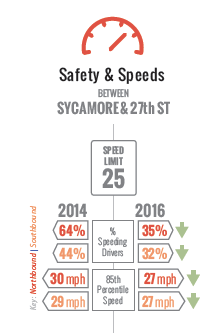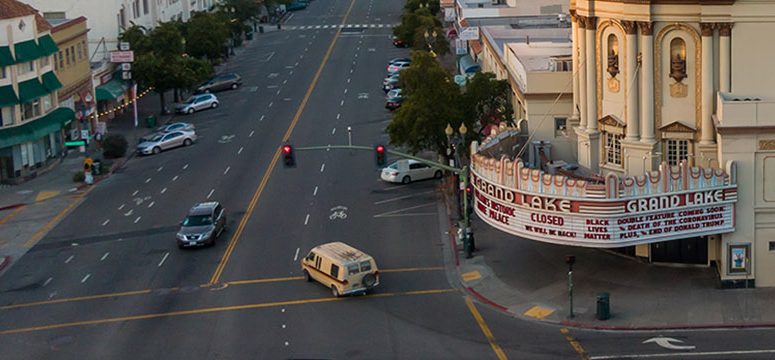Buried in a report from the Oakland Public Works Department on the Telegraph Avenue Complete Streets Project--which brought parking-protected bike lanes to one of the busiest, most difficult stretches of road in Oakland--are some awesome graphics.
They are based on a 2016 evaluation of the stunning safety results of the project, which saw a giant increase--over 300 percent--in drivers yielding to pedestrians in crosswalks, for example, as well as big increases in walking and biking and a decrease in car traffic. This is not new information, but the graphics pop out as a very simple, expedient way of showing that road diets, and parking-protected bike lanes, really work.
The report is going to the City Council tonight in support of a plan to improve on the lanes, which were designed as a low-cost quick-build improvement using only paint. Experience with the lanes has shown what does and doesn't work, and now OakDOT is proposing changes to this section of Telegraph to improve the design.
Some easy, inexpensive improvements have already been added, including some soft-hit posts and planters to clearly mark for drivers where they are supposed to park--that is, not in the bike lane--and "temporary" bus boarding islands to give bus passengers a raised, clearly delineated waiting zone.
These improvements sorta worked. The planters weren't bolted down, and sometimes got moved into the bike lanes, and soft-hit posts were sometimes demolished. One big challenge to making permanent changes was finding and purchasing a street sweeper that could fit in the bike lane--a problem that other cities, such as Sacramento and San Francisco, also faced. OakDOT says it is in the process of procuring that new sweeper now.
The City Council will consider a number of minor changes to make the project even better, to be instituted this year. They including installing large, durable bollards to clearly mark the bike lane and prevent vehicles from parking in it, and adding reflective posts and reflective paint to the bus boarding islands to make them more obvious to drivers and bicyclists.
Future project improvements are planned for a few years out. OakDOT plans to transform what are currently painted buffer zones into concrete islands, improve sight lines and increase pedestrian areas, incorporate speed humps to slow turning traffic, widen the parking area, and upgrade and clarify loading zones and short-term parking areas. These are all the result of feedback from people using the area.






